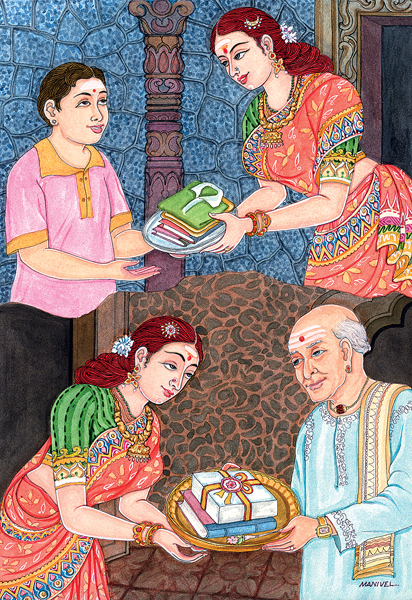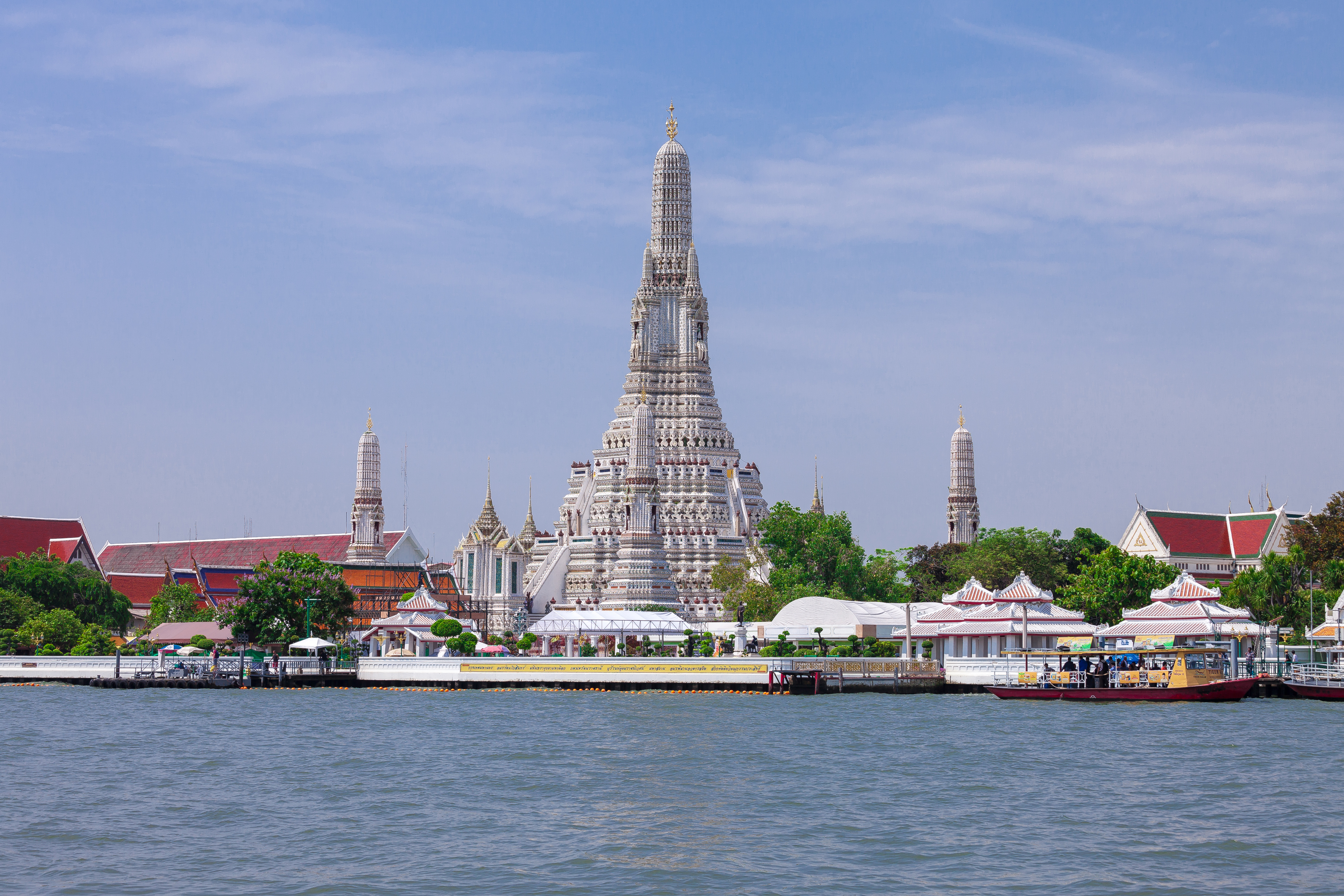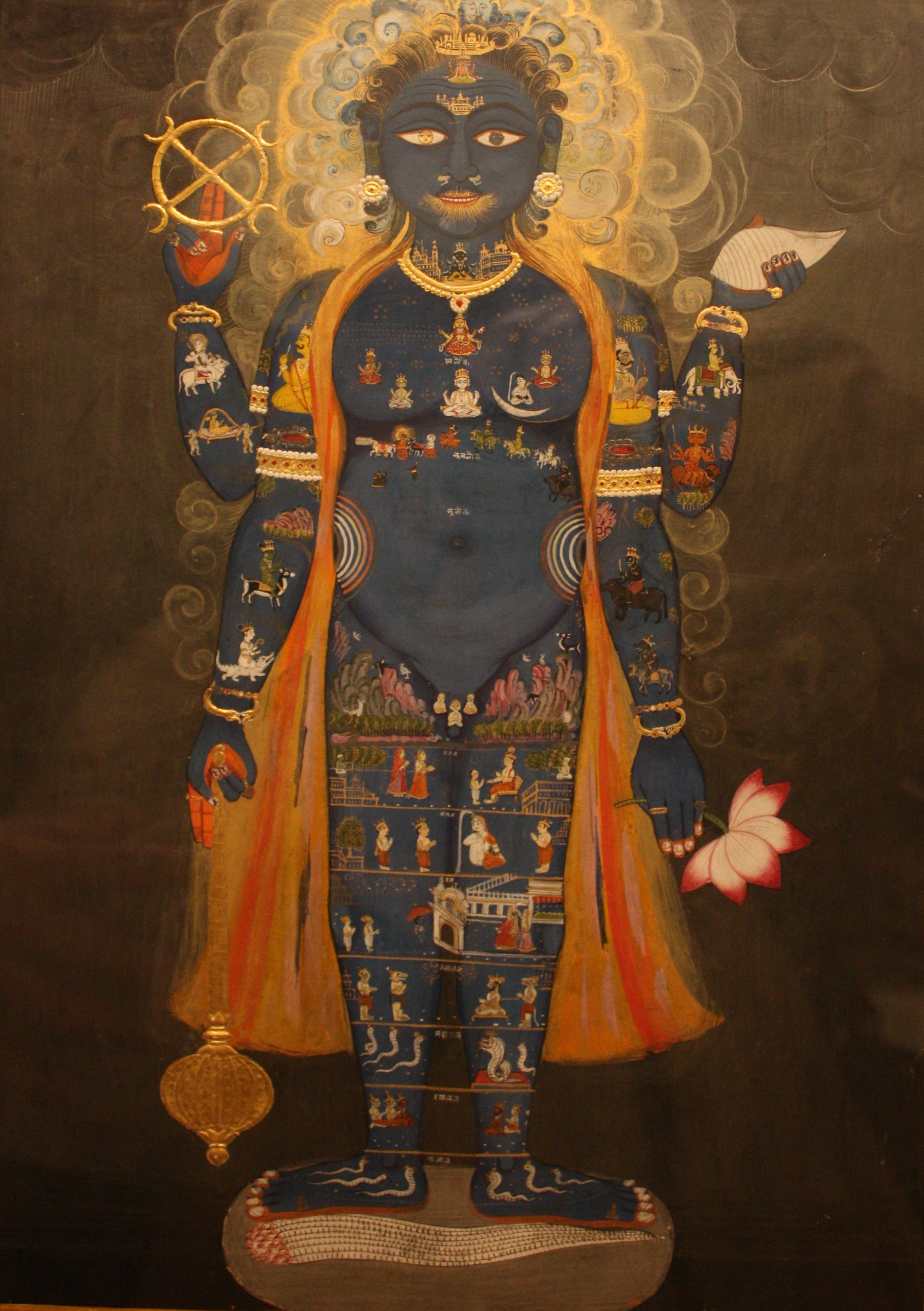|
Brahmajāla Sutta
The ''Brahmajāla Sutta'' is the first of 34 '' sutta'' in the '' Dīgha Nikāya'' (the Long Discourses of the Buddha), the first of the five '' nikāya'', or collections, in the '' Sutta Pitaka'', which is one of the "three baskets" that compose the Pali ''Tipitaka'' of (Theravada) Buddhism. The name means Raft (jāla-made.of inflatable cow or buffalo skins tied to a wooden platform used to convey people from one shore to the other) of Brahmā. The ''sutta'' is also called ''Atthajala'' (Raft of Essence), ''Dhammajala'', (Raft of the Dhamma), ''Ditthijala'' (Raft of Views), ''Anuttarasangama Vijaya'' (Incomparable Victory in Battle). The word "net" is a mistranslation. The words of the Revered Buddha are clear when he describes the Dhamma as teachings that take one to the safe shore (of eternity) The ''sutta'' discusses two main topics: the elaboration of the "Ten Precepts" (''Cula-sila'') and the "Middle Precepts" (''Majjhima-sila''). ''Cula-sila'' deals with the Ten Precepts ... [...More Info...] [...Related Items...] OR: [Wikipedia] [Google] [Baidu] |
Sūtra
''Sutra'' ()Monier Williams, ''Sanskrit English Dictionary'', Oxford University Press, Entry fo''sutra'' page 1241 in Indian literary traditions refers to an aphorism or a collection of aphorisms in the form of a manual or, more broadly, a condensed manual or text. Sutras are a genre of ancient and medieval Indian texts found in Hinduism, Buddhism and Jainism. In Hinduism, sutras are a distinct type of literary composition, a compilation of short aphoristic statements.Gavin Flood (1996), ''An Introduction to Hinduism'', Cambridge University Press, , pages 54–55 Each sutra is any short rule, like a theorem distilled into few words or syllables, around which teachings of ritual, philosophy, grammar, or any field of knowledge can be woven. The oldest sutras of Hinduism are found in the Brahmana and Aranyaka layers of the Vedas. Every school of Hindu philosophy, Vedic guides for rites of passage, various fields of arts, law, and social ethics developed respective sutras, which ... [...More Info...] [...Related Items...] OR: [Wikipedia] [Google] [Baidu] |
Sangha (Buddhism)
Sangha or saṃgha () is a term meaning "association", "assembly", "company" or "community". In a political context, it was historically used to denote a governing assembly in a republic or a kingdom, and for a long time, it has been used by religious associations, including Buddhists, Jains and Sikhs. Given this history, some Buddhists have stated that the tradition of the ''sangha'' represents humanity's oldest surviving democratic institution. In Buddhism, ''sangha'' refers to the monastic communities of ''bhikkhu'' (monks) and '' bhikkhuni'' (nuns). These communities are traditionally referred to as the ''bhikkhu-sangha'' or the ''bhikkhuni-sangha''. As a separate category, those Buddhists who have attained any of the four stages of enlightenment, whether or not they are members of the monastic community, are referred to as the ''āryasaṅgha'' ("noble Sangha"). According to the Theravada school and Nichiren Shoshu Buddhism, the term ''sangha'' does not refer to ... [...More Info...] [...Related Items...] OR: [Wikipedia] [Google] [Baidu] |
Brahma (Buddhism)
Brahma (, ) is a Hindu god, referred to as "the Creator" within the Trimurti, the triple deity, trinity of Para Brahman, supreme divinity that includes Vishnu and Shiva.Jan Gonda (1969)The Hindu Trinity, Anthropos, Bd 63/64, H 1/2, pp. 212–226.Jan Gonda (1969)The Hindu Trinity, Anthropos, Bd 63/64, H 1/2, pp. 218–219. He is associated with creation, knowledge, and the ''Vedas''. Brahma is prominently mentioned in Creation myth, creation legends. In some ''Puranas'', he created himself in a golden embryo known as the Hiranyagarbha. Brahma is frequently identified with the Rigvedic deities, Vedic god Prajapati.;David Leeming (2005), The Oxford Companion to World Mythology, Oxford University Press, , page 54, Quote: "Especially in the Vedanta Hindu Philosophy, Brahman is the Absolute. In the Upanishads, Brahman becomes the eternal first cause, present everywhere and nowhere, always and never. Brahman can be incarnated in Brahma, in Vishnu, in Shiva. To put it another way, eve ... [...More Info...] [...Related Items...] OR: [Wikipedia] [Google] [Baidu] |
Karma
Karma (, from , ; ) is an ancient Indian concept that refers to an action, work, or deed, and its effect or consequences. In Indian religions, the term more specifically refers to a principle of cause and effect, often descriptively called the principle of karma, wherein individuals' intent and actions (cause) influence their future (effect): Good intent and good deeds contribute to good karma and happier Reincarnation, rebirths, while bad intent and bad deeds contribute to bad karma and worse rebirths. In some scriptures, however, there is no link between rebirth and karma. In Hinduism, karma is traditionally classified into four types: Sanchita karma (accumulated karma from past actions across lifetimes), Prārabdha karma (a portion of Sanchita karma that is currently bearing fruit and determines the circumstances of the present life), Āgāmi karma (future karma generated by present actions), and Kriyamāṇa karma (immediate karma created by current actions, which may y ... [...More Info...] [...Related Items...] OR: [Wikipedia] [Google] [Baidu] |
Buddhist Cosmology
Buddhist cosmology is the description of the shape and evolution of the Universe according to Buddhist Tripitaka, scriptures and Atthakatha, commentaries. It consists of a temporal and a spatial cosmology. The temporal cosmology describes the timespan of the creation and dissolvement of alternate universes in different aeons. The spatial cosmology consists of a vertical cosmology, the various planes of beings, into which beings are reborn due to their merits and development; and a horizontal cosmology, the distribution of these world-systems into an infinite sheet of existential dimensions included in the cycle of samsara. The entire universe is said to be made up of five basic elements of Earth (classical element), Earth, Water (classical element), Water, Fire (classical element), Fire, Air (classical element), Air and Aether (classical element), Space. Buddhist cosmology is also intwined with the belief of Karma in Buddhism, Karma. As a result, some ages are filled with pr ... [...More Info...] [...Related Items...] OR: [Wikipedia] [Google] [Baidu] |
Atman (Buddhism)
Atman or Ātman may refer to: Religion * ''Ātman'' (Hinduism), meaning "Self", a philosophical concept common to all schools of Hindu philosophy * ''Ātman'' (Buddhism), ''attā'' or ''attan'', a reference to the essential self ** ''Anattā'' or ''anātman'' — "not-self", central concept in Buddhism * ''Ātman'' (Jainism), or ''Jīva'', a philosophical term used within Jainism to identify the soul * '' Atman jnana'' — "knowledge" in the context of Indian philosophy and religions Film * ''Ātman'' (1975 film), a Japanese experimental short film directed by Toshio Matsumoto * ''Atman'' (1997 film), a documentary film directed by Pirjo Honkasalo People * Cynthia Atman, American engineer * Pavel Atman (born 1987), Russian handball player See also * Ataman, a title of Cossack and haidamak leaders of various kinds * Atma (other) Atma or ATMA may refer to: * Atma (album), ''Atma'' (album), a 2011 album by heavy metal band Yob * ATMA (electronic musician), the per ... [...More Info...] [...Related Items...] OR: [Wikipedia] [Google] [Baidu] |
Soul (spirit)
The soul is the purported immaterial aspect or essence of a living being. It is typically believed to be immortal and to exist apart from the material world. The three main theories that describe the relationship between the soul and the body are interactionism, parallelism, and epiphenomenalism. Anthropologists and psychologists have found that most humans are naturally inclined to believe in the existence of the soul and that they have interculturally distinguished between souls and bodies. The soul has been the central area of interest in philosophy since ancient times. Socrates envisioned the soul to possess a rational faculty, its practice being man's most godlike activity. Plato believed the soul to be the person's real self, an immaterial and immortal dweller of our lives that continues and thinks even after death. Aristotle sketched out the soul as the " first actuality" of a naturally organized body—form and matter arrangement allowing natural beings to aspi ... [...More Info...] [...Related Items...] OR: [Wikipedia] [Google] [Baidu] |
Loka
Loka () is a concept in Hinduism and other Indian religions, that may be translated as a planet, the universe, a plane, or a realm of existence. In some philosophies, it may also be interpreted as a mental state that one can experience. A primary concept in several Indian religions is the idea that different lokas are home to various divine beings, and one takes birth in such realms based on their karma. Hinduism Three lokas The most common classification of lokas in Hinduism is the Trailokya, or the three worlds. The concept of the three worlds has a number of different interpretations in Hindu cosmology. In Hindu literature, the three worlds refer to either the earth (Bhuloka), heaven ( Svarga), and hell (Naraka), or the earth (Bhuloka), heaven (Svarga), and the netherworld ( Patala) Bhuloka In the Narada Purana, Bhuloka is identified with the planet Earth, the world of human beings. It is described to be split up into seven regions, referred to as dvipas (islands). T ... [...More Info...] [...Related Items...] OR: [Wikipedia] [Google] [Baidu] |
Universe
The universe is all of space and time and their contents. It comprises all of existence, any fundamental interaction, physical process and physical constant, and therefore all forms of matter and energy, and the structures they form, from sub-atomic particles to entire Galaxy filament, galactic filaments. Since the early 20th century, the field of cosmology establishes that space and time emerged together at the Big Bang ago and that the Expansion of the universe, universe has been expanding since then. The observable universe, portion of the universe that can be seen by humans is approximately 93 billion light-years in diameter at present, but the total size of the universe is not known. Some of the earliest Timeline of cosmological theories, cosmological models of the universe were developed by ancient Greek philosophy, ancient Greek and Indian philosophy, Indian philosophers and were geocentric model, geocentric, placing Earth at the center. Over the centuries, more prec ... [...More Info...] [...Related Items...] OR: [Wikipedia] [Google] [Baidu] |
Sassatavada
Sassatavada (Pali), also śāśvata-dṛṣṭi (Sanskrit), usually translated "eternalism", is a kind of thinking rejected by the Buddha in the nikayas (and agamas). One example of it is the belief that the individual has an unchanging self. Views of this kind were held at the Buddha's time by a variety of groups. The Buddha rejected this and the opposite concept of ''ucchedavada'' ( annihilationism) on both logical and epistemic grounds. He proposed a Middle Way between these extremes, relying not on ontology Ontology is the philosophical study of existence, being. It is traditionally understood as the subdiscipline of metaphysics focused on the most general features of reality. As one of the most fundamental concepts, being encompasses all of realit ... but on causality. Eternalism included the belief that the extinction of things means their latency and the production of things means their manifestation — this violates the Buddha's principle of the middle way.K. Venkat ... [...More Info...] [...Related Items...] OR: [Wikipedia] [Google] [Baidu] |
Buddha Games List
The Buddhist games list is a list of games that Gautama Buddha is reputed to have said that he would not play and that his disciples should likewise not play, because he believed them to be a 'cause for negligence'. This list dates from the 6th or 5th century BC and is the earliest known list of games. There is some debate about the translation of some of the games mentioned, and the list given here is based on the translation by T. W. Rhys Davids of the ''Brahmajāla Sutta'' and is in the same order given in the original. The list is duplicated in a number of other early Buddhist texts, including the ''Vinaya Pitaka''. # Games on boards with 8 or 10 rows. This is thought to refer to ''ashtapada'' and '' dasapada'' respectively; however, later Sinhala commentaries refer to these boards also being used with games involving dice. # The same games played on imaginary boards. ''Akasam astapadam'' was an ''ashtapada'' variant played with no board, literally "astapadam played in the ... [...More Info...] [...Related Items...] OR: [Wikipedia] [Google] [Baidu] |







